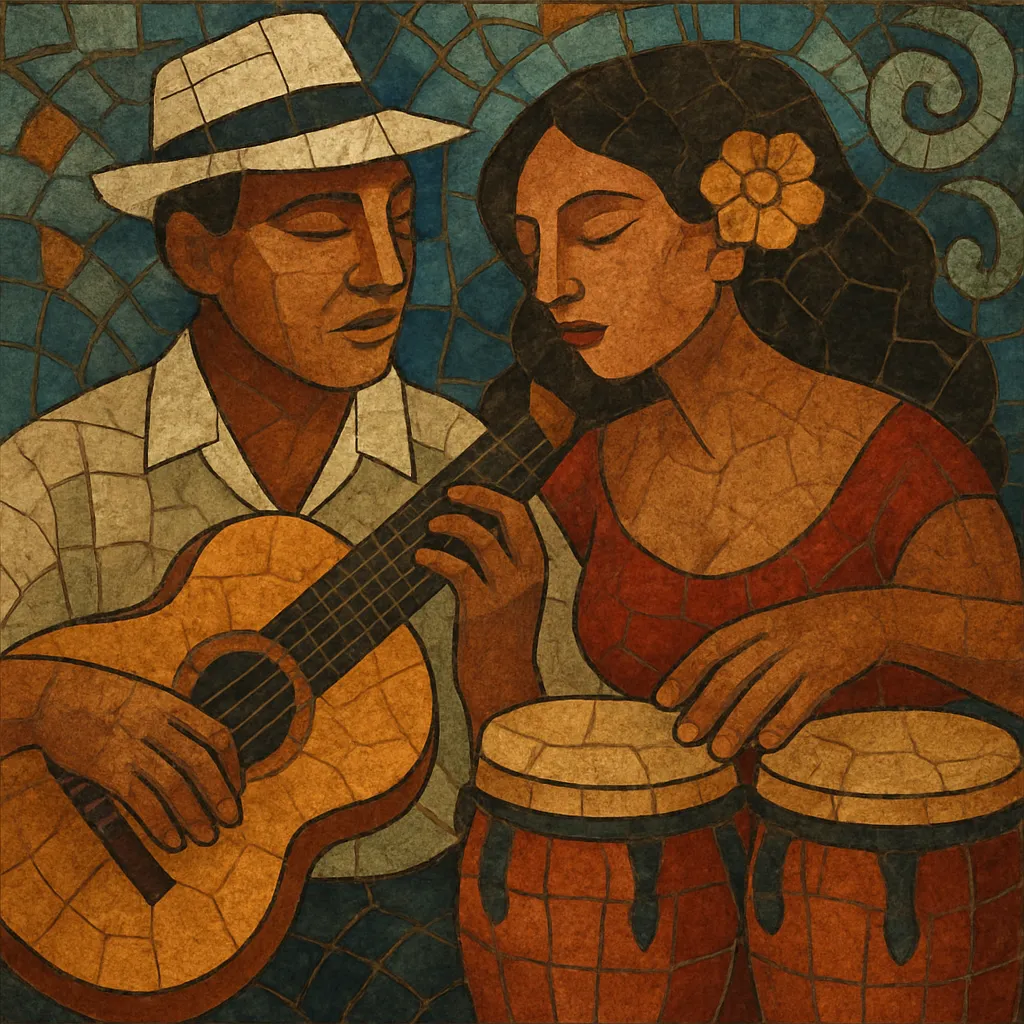Bolero son is a Cuban hybrid that fuses the romantic lyricism and tender tempo of the bolero with the syncopated groove and clave logic of the son cubano. It keeps the intimate, heartfelt storytelling of the bolero but situates it in a son ensemble, using tres or guitar guajeos, anticipated bass tumbao, and the son clave to propel a gentle yet danceable sway.
Compared to a straight bolero, bolero son is more rhythmically elastic and syncopated; compared to son cubano, it is slower, smoother, and more focused on melodic phrasing and sentiment. Classic songs like “Lágrimas Negras” epitomize the style: a lament set over a supple son groove that invites both listening and close dancing.
Bolero son emerged in eastern Cuba and Havana as son conjuntos and vocal trios began adapting bolero repertoire to son’s rhythmic framework. Miguel Matamoros’s “Lágrimas Negras” (1930) is widely cited as a touchstone, showing how a romantic bolero melody could ride the son clave and tumbao without losing intimacy.
As conjuntos added trumpets and refined percussion (bongó, maracas, clave, and later conga), the style matured. Singers blended bolero crooning with son phrasing, and ensembles balanced tender verses with tasteful, often brief montuno codas. Radio, 78 rpm records, and tours spread bolero son across the Caribbean and into Latin American and U.S. markets.
The romantic, danceable template of bolero son influenced later Caribbean and Latin dance musics. While the classic Cuban scene shifted with political and industry changes, the repertoire remained standard for Cuban and diaspora singers who alternated between boleros, sones, and their hybrids.
The Buena Vista Social Club era renewed global attention to classic Cuban idioms, and bolero son’s hallmark recordings resurfaced. Modern interpreters continue to draw on its supple groove and emotive storytelling, and its DNA is audible in salsa romántica and other Latin ballad-dance crossovers.


